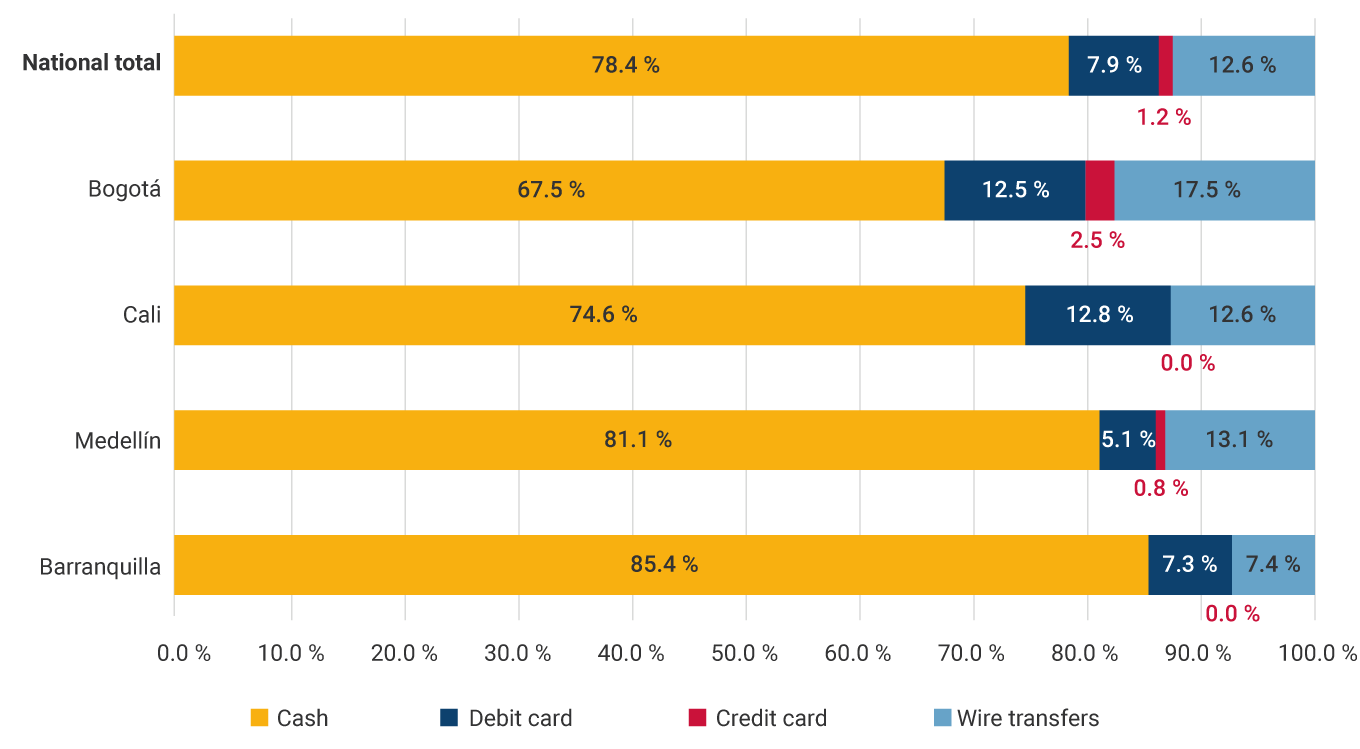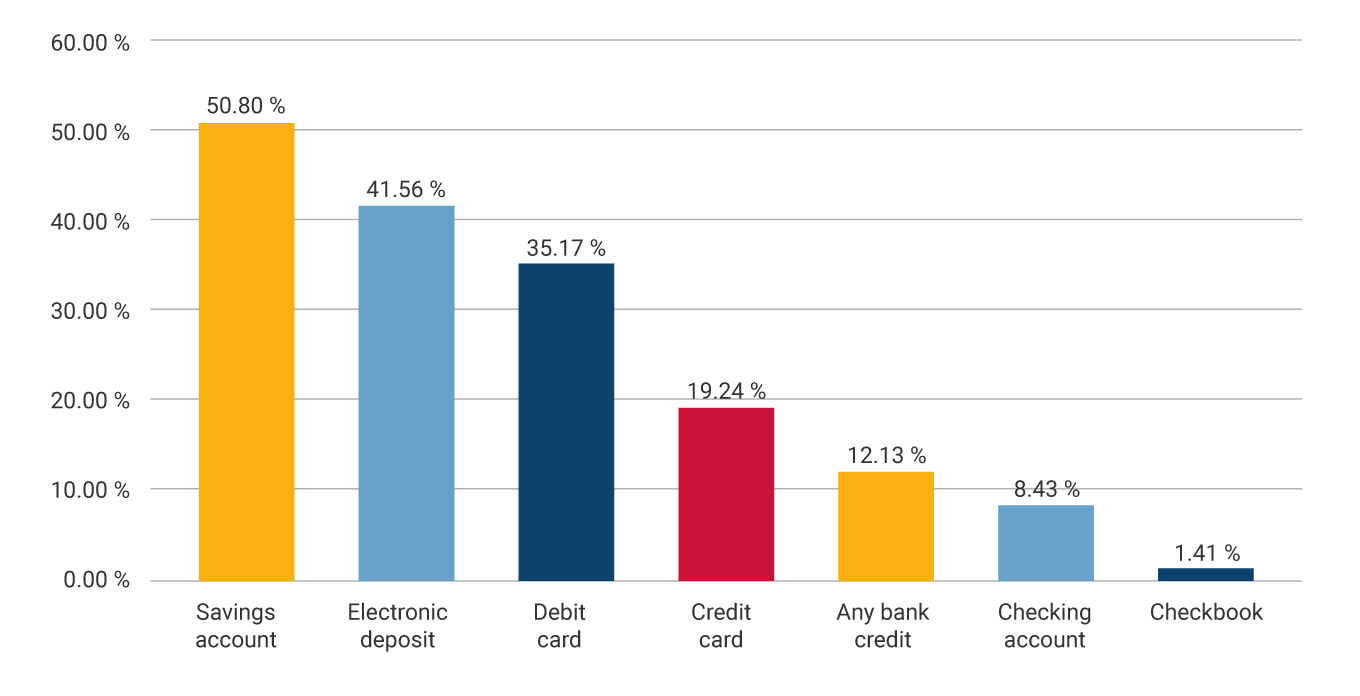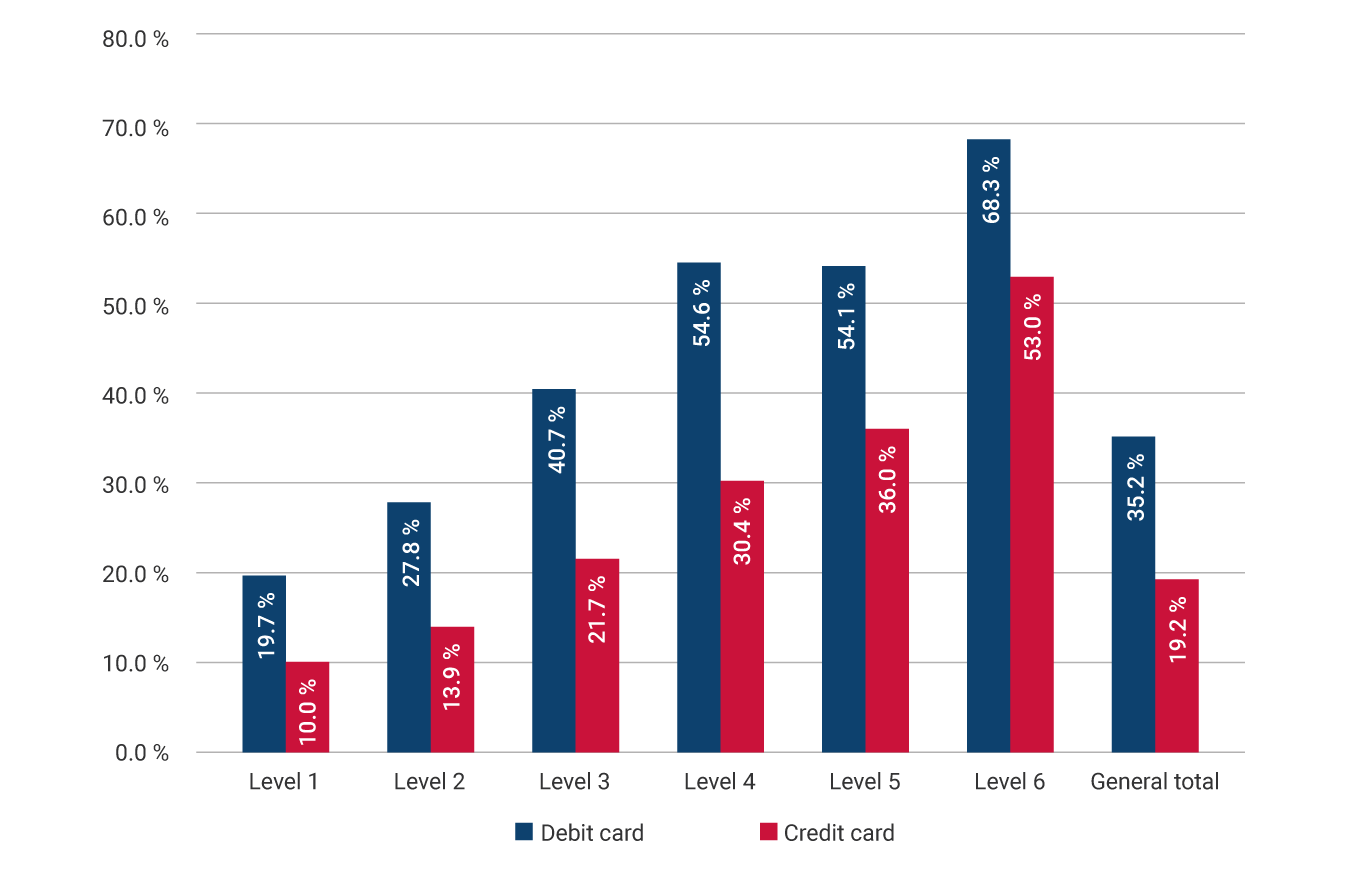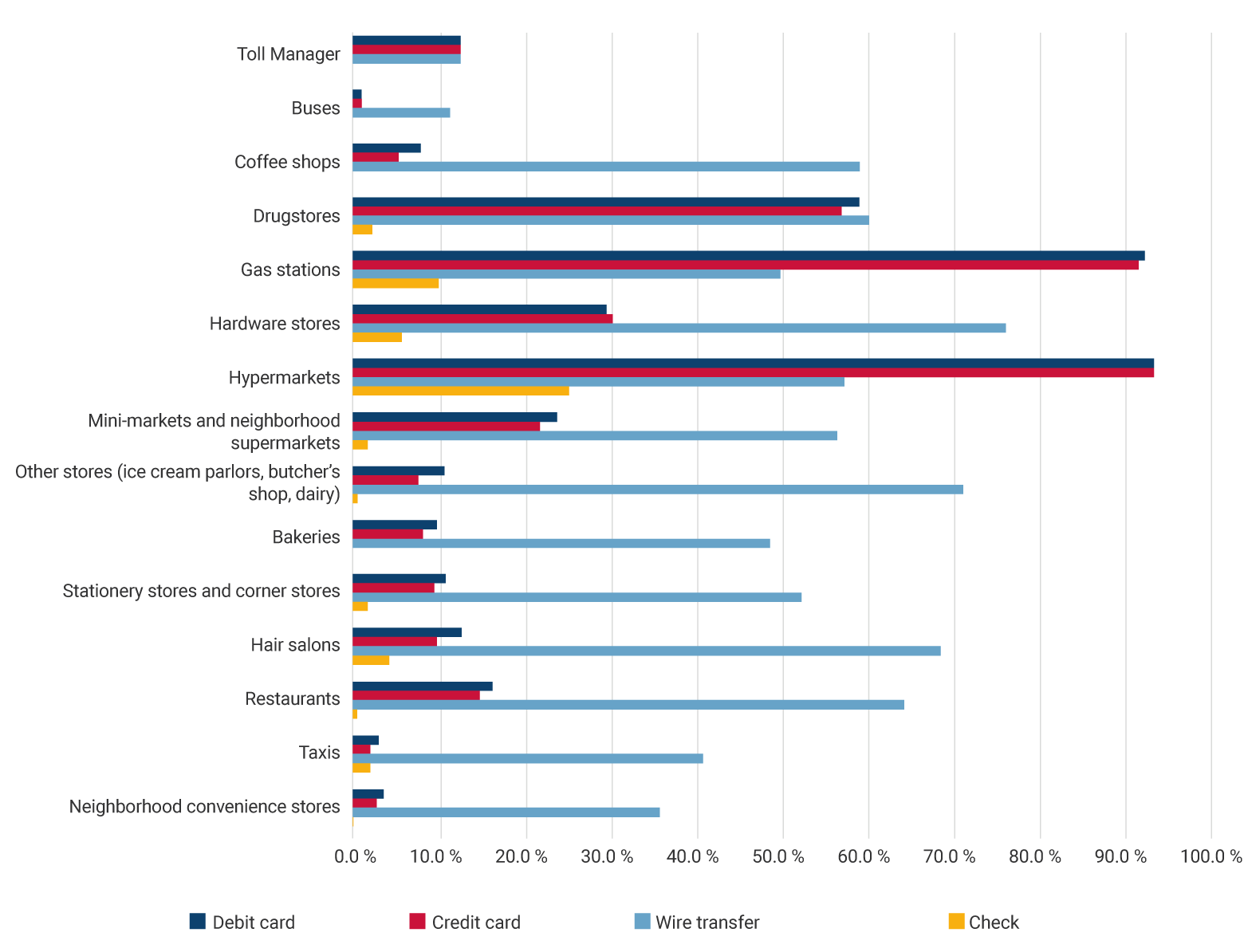Retail payment instruments play a crucial role in economic and financial stability and in the functioning of trade. These include cash, debit and credit cards, checks, and wire transfers. A recent survey conducted by Banco de la República (the Central Bank of Colombia) on the use of these instruments found that cash is the preferred form of payment by the public in their usual low-value transactions, and that the trade perceives cash as the most used payment method by its customers. Since many cash transactions do not leave a ‘trace’, as electronic payment instruments do, it is important to understand the evolution of cash use, the reasons for its preference, and the importance that different payment instruments have acquired. It is also interesting to note how the pandemic affected payment habits due to confinement and other restrictions on mobility.
As shown in Graph 1, in relation to the number of transactions, the survey found that the public perception for the national total indicates that cash is the most used instrument (78.4%), followed by wire transfers (12.6%), debit card (7.9%) and credit card (1.2%). The results for large capital cities reveal important differences. Bogotá appears as the city with the lowest perceived use of cash and the highest use of wire transfers. In contrast, in cities such as Cali and Medellin, and especially in Barranquilla, the use of cash is considerably higher than debit cards and wire transfers. Some of the main reasons for the greater preference for cash include the ease and speed of paying, the possibility of reusing it immediately, and the habit of using it for small purchases or purchases on the street.
Graph 1: Instruments used in regular monthly payments
(percentage of the population)

Source: Banco de la República (Epbmip survey)
The survey also showed that the Covid-19 pandemic significantly reduced the importance of cash as a payment instrument, since its use by the population decreased from 88.1% in 2019 to 78.4% in 2022, per number of transactions. In contrast, the use of wire transfers had a significant boost, increasing their share to 12.6% in 2022, almost five times higher than the one reported in 2019 (2.7%). Indeed, 16.5% of the surveyed public and 22.8% of merchants said they used electronic payments for the first time during the pandemic.
The preferences described above are reflected in the distribution of holdings of financial methods and instruments of payment (Graph 2), which highlight the predominance of savings accounts, electronic deposits, and debit cards, in contrast to the low importance of checking accounts and checkbooks, which used to be a close substitute for cash in the past. Overall, 56.9% of the population reported having at least one financial product, indicating that a high proportion of the public (43.1%) still does not use any financial product.
Graph 2: Holdings of methods of payment and payment instruments

Source: Banco de la República (Epbmip)
The survey's results by socioeconomic status show that the higher the income status, the higher the proportion of the population that has debit and credit cards (Graph 3). As might be expected, this positive relationship between socioeconomic status and payment cards also reflects the higher percentage of savings account holdings in the population of higher-income status.
Graph 3: Debit and credit cards availability by level of socioeconomic status

In the retail sector, cash is the most widely accepted payment instrument, with some exceptions, as in the case of some public transport services (i.e., SITP, Alimentadores, Transmilenio -– Colombian public transport means, and others similar). In contrast, payment instruments other than cash are preferred by hypermarkets and gas stations, which accept, in more than 90.0%, debit and credit cards (Graph 4). Wire transfers are also highly accepted, and in some commercial establishments they are more widely accepted than payment cards.
Graph 4: Acceptance of payment instruments other than cash (by commercial channels)

Source: Banco de la República (Epbmip)
In conclusion, the survey shows that the country has made significant progress in adopting electronic payment instruments that replace cash and stimulate the holding of payment methods (for example, electronic deposit and savings accounts). This process, which was paradoxically stimulated by the pandemic, improves the traceability of economic transactions, and favors financial intermediation. However, there is still a wide margin for development insofar as the use of cash remains predominant. Among the population of lower-income status, the use of electronic payment methods and the holding of bank accounts and other financial assets remains low.
To close these gaps and improve efficiency of electronic payments, Banco de la República (Banrep) has defined an agenda, which includes, among other initiatives, the decision to promote a new Instant Payments System that will cover a diversity of use cases and ensure broad access and interoperability in electronic payments. The design of this system was recently disclosed, after having carried out a comprehensive analysis of the different actors of the industry in the framework of the Payment Systems Forum created by Banrep.

































































